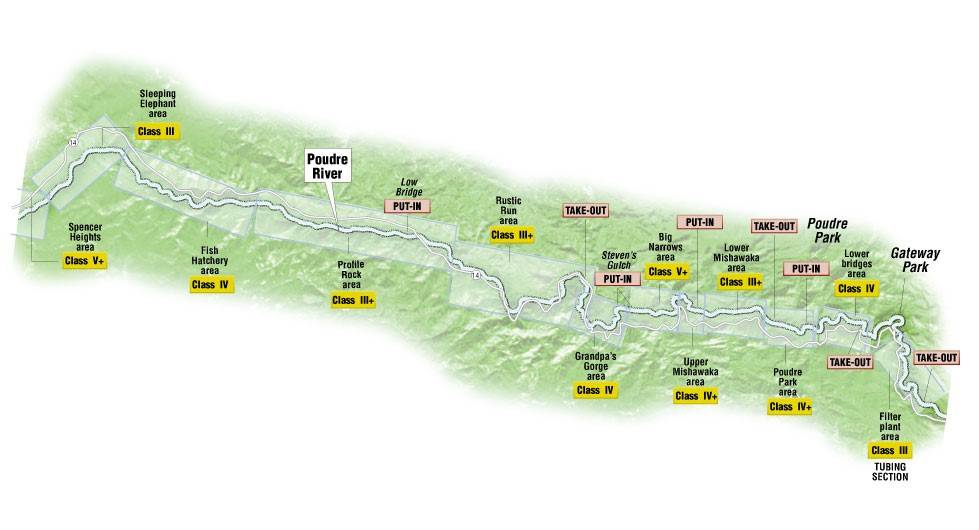Tens of thousands of people annually visit the water recreation areas in Larimer County.
We want everyone to consider the following suggestions when making plans to spend time near the water:
- Tell someone where you are going, when you expect to return, and where and who to call if you don’t. If your plans change while you are traveling, put a note in your car on the driver’s side dashboard with the new plans.
- Wear a life jacket. Wear a properly fitting personal floatation device (life jacket) for all river activities. Don’t assume you have the swimming skills to keep you afloat - even the strongest swimmers can drown.
- Keep a close watch on children even if they are far from the water. Water safety for children is especially important as they can quickly enter the water and get in trouble when your attention is diverted for only a moment.
- Never walk, play, or climb on slippery rocks and logs near rivers and streams.
- Stay away from riverbanks during times of high flowing water. The banks may be unstable and give way underneath you.
- Never forget the power of the river especially when it is running high and fast from spring runoff or recent heavy rains. Waters in rivers exert very powerful forces against any fixed object and this force, once in place, remains constant.
- Check river and stream conditions before heading out at U.S. Geological Survey - National Water Information System
- Avoid Dams. Small low-head dams are responsible for over 8% of river fatalities. Most dams are much worse than they look! Know the location of dams before recreating on the river and avoid getting too close.
- Be aware of the limitations of yourself in the water. Even if you are a good swimmer, fast moving water and undercurrents can easily catch you off guard. Additionally, there are often rocks or other obstacles under the water that can knock you off balance even in shallow water depths.
- Watch your surroundings - including the weather. Be prepared for extremes in the weather, especially if more rain is predicted. This can alter the water flow and depth in a short period of time and also contribute to hypothermia. When your clothes are soaking wet hypothermia is a danger even in the summer.
- Carry a First Aid kit and know how to use it. Take a first aid course for CPR and basic medical assistance.
- If caught in a fast flowing river, rapids, or storm water, try to float feet first in a half sit position.
- Remember: Reach or Throw, Don’t Go. If someone is caught in fast moving water, reach out to them or throw a rope to the person in the water. Don’t go into the water yourself or you may also need to be rescued.

